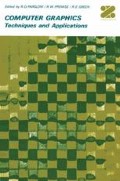Abstract
Artificial intelligence is the science of mechanising interesting brain-work. Most people would say that the really interesting kind of brain-work is not so much generating a solution to a particular problem but rather building a strategy for obtaining solutions in general. The use of computers in business is still largely at the level of helping the clerk, or at a more advanced stage, the designer. To be of significant help to the manager and long-range planner the computing systems of tomorrow will have to go beyond the manufacture of results to the synthesis of strategies. We further believe that the processes of strategy-building will be carried out by interactive man-machine systems, in which each partner has something to contribute which the other finds hard to provide. It is the long-term aim of our Department to produce an “intelligent machine” capable of interacting with man in this way.
Access this chapter
Tax calculation will be finalised at checkout
Purchases are for personal use only
Preview
Unable to display preview. Download preview PDF.
References
Donaldson, P. E. K. (1960). Error decorrelation : a technique for matching a class of functions. Proc. Ill International Conf. on Medical Electronics, pp. 173–178.
Doran, J. E., and Michie, D. (1966). Experiments with the Graph Traverser program. Proc. R. Soc. (A), 294, pp. 235–259.
Doran, J. E. (1968). New developments of the Graph Traverser. Machine Intelligence 2, (eds. Dale, E. and Michie, D.). Edinburgh: Oliver and Boyd, pp. 119–135.
Michie, D. and Chambers, R. A. (1968). BOXES: an experiment in adaptive control. Machine Intelligence 2, (eds. Dale, E. and Michie, D.). Edinburgh: Oliver and Boyd, pp. 137–152.
Michie, D., Fleming, J. G. and Oldfield, J. V. (1968). A comparison of heuristic, interactive and unaided methods of solving a shortest-route problem. Machine Intelligence 3. (ed. Michie, D.). Edinburgh University Press, pp. 245–255.
Author information
Authors and Affiliations
Editor information
Editors and Affiliations
Rights and permissions
Copyright information
© 1969 Plenum Publishing Company Ltd.
About this chapter
Cite this chapter
Chambers, R.A., Michie, D. (1969). Man-Machine Co-operation on a Learning Task. In: Parslow, R.D., Prowse, R.W., Green, R.E. (eds) Computer Graphics. Springer, Boston, MA. https://doi.org/10.1007/978-1-4684-8586-8_18
Download citation
DOI: https://doi.org/10.1007/978-1-4684-8586-8_18
Publisher Name: Springer, Boston, MA
Print ISBN: 978-1-4684-8588-2
Online ISBN: 978-1-4684-8586-8
eBook Packages: Springer Book Archive

